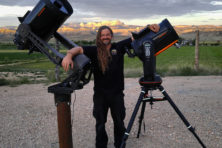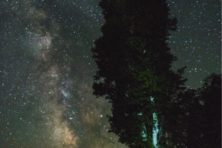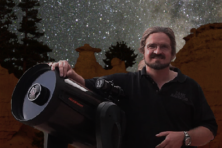Green Notes: Stargazers Celebrate Small Victory for Dark Sky
- Share
- Tweet
- Pin
- Share
Meanwhile, is another invasive insect on the way?

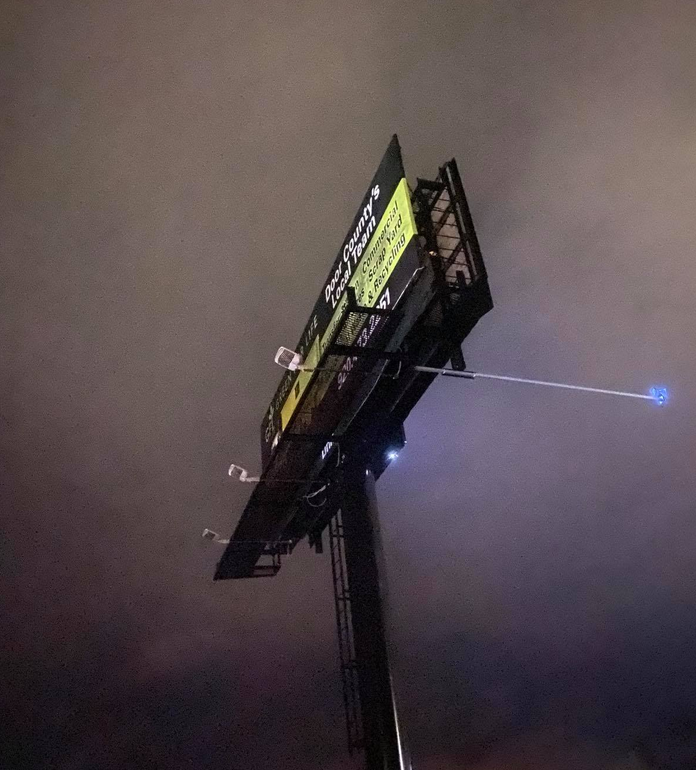
The Door Peninsula Astronomical Society (DPAS) saw an encouraging result after raising awareness about the light pollution that was coming from a billboard and then negotiating a solution with the company’s manager.
The lights in question were illuminating a sign – and the night sky – near Gordon Road and Highway 42/57, just outside of the Sturgeon Bay city limits and only a mile south of the start of the 42/57 Scenic Byway, where such lights are banned.
As reported last month in the Peninsula Pulse, DPAS vice president and computer-driven telescope expert Tom Gwilym and fellow DPAS members had major concerns about a set of Link Media billboard lights that were shining almost straight up all night long, and fewer than two miles from the DPAS observatory.
Gwilym received an email July 6 from a regional Link manager, who said a crew could shorten the conduit and the distance between the lights and the sign so that more light would hit the sign and less would go skyward. Also, the manager said the company could time the lights to go off at midnight. The manager instructed Gwilym not to provide his exact words to the media, but Gwilym certainly wanted to share the news of this progress.
Gwilym – as well as naturalist Coggin Heeringa of Crossroads at Big Creek, the observatory’s neighbor – celebrated the company’s action to send less light toward the stars and galaxies that the astronomy group is viewing and photographing.
“One small step for darkness,” Gwilym quipped.
Heeringa said she’d love to see the lights go off before midnight, but Gwilym said that on at least one night, the lights were off well before 12 am. Gwilym was told via email that a light timer would turn the lights back on at 5 am.
“I’ll keep watching and see what the pattern is,” he said.
Gwilym said the main exterior light pollution left in that vicinity comes from a photography business, the Amoco/Culver’s site and bare bulbs around a fireworks shop.
The DPAS and Heeringa monitor lights in the Highway 42/57 corridor because of its proximity to the telescope, and they say there’s a great example of stargazing-friendly lighting along the highway: at the highway roundabouts.
Heeringa and Gwilym said those lights shine down and have shields so that people can’t see the light from the side. They illuminate only the parts of the roundabouts and roadway that need to be lit.
Anyone who wants to generate less light pollution at home can help by shielding lawn lighting, exterior house lights and spotlights so that light doesn’t go up or illuminate locations other than the intended areas.
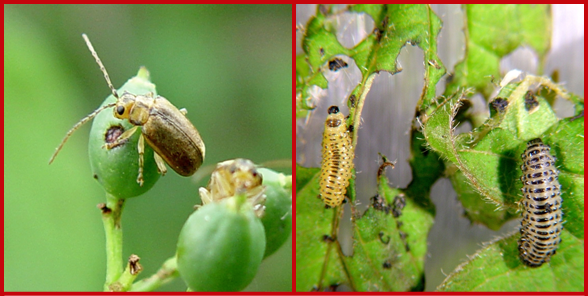
Bush Killer at the Doorstep?
A new insect pest is decimating some desirable native shrubbery in the Green Bay area and southeast Wisconsin. Mark Konlock, horticulture manager at the Green Bay Botanical Gardens, said neighboring counties should be on the lookout for the viburnum leaf beetle.
“We just noticed it last year on our viburnums here,” said Konlock, noting that the beetle tends to go after native plants such as arrowwood viburnum and highbush cranberry almost as readily as their nonnative cousins.
The quarter-inch-long, tan or yellowish, lightning-bug-shaped beetles lay eggs on the stems of the plants in that fall and cover them with a bark-like material to overwinter. The eggs hatch in the spring, and then sawfly-like black and brown larvae decimate the leaves into their next life stages. They can defoliate the plant, making it hard for the plant to survive year-after-year attacks.
The University of Wisconsin’s Insect Diagnostic Lab mapped the beetle as near to Green Bay and Door County as Winnebago, Washington and Ozaukee counties as of 2019. By this spring, the UW-Extension had recorded them in 12 counties, including Sheboygan and Brown.
The Green Bay Botanical Gardens have hedges that include a lot of viburnum – a monoculture planting of shrubs that eased the spread. Konlock said, however, that the beetles seem to be finding their way to lone, isolated plants as well.
The UW-Extension reported an isolated infestation of viburnum leaf beetles in 2009, but the spread has been steady since 2014. The UW horticulturalists advise people not to plant arrowwood viburnum, European cranberrybush or American cranberrybush viburnum because the beetles “strongly prefer” those types. Instead, they suggest that landscapers plant resistant varieties such as doublefile viburnum, Judd viburnum or Koreanspice viburnum.


